[Warning: General spoilers ahead.]
CTV rolls out its first original homegrown series of the fall season Sunday night with The Disappearance, a six-part suspense drama about a family rocked by the titular disappearance of Anthony Sullivan (Michael Riendeau) on his tenth birthday. Plunged into a vortex of grief, his divorced parents, Helen (Camille Sullivan) and Luke (Aden Young), Aunt Catherine (Joanne Kelly), and Grandfather Henry (Peter Coyote) grapple with stalled police investigation by Lieutenant-Detective Susan Bowden (Micheline Lanctôt) and Sargeant-Detective Charles Cooper (Kevin Parent), and decide to wage their own while also navigating the revelation of long-held family secrets.
Shot last fall in Montreal, the series was written by Normand Daneau and Geneviève Simard and helmed entirely by Peter Stebbings, a director familiar to audiences for his work on Killjoys, Wynonna Earp, Orphan Black and The Listener, where he also appeared in the cast. Before his shift into directing, he worked as an actor in projects going back to the original run of The X-Files. I spoke with Stebbings today about the project, his first foray into directing an entire series.
Stebbings is self-deprecating about how he was hired on, but he jumped at the chance to do it. “I think there was a producer who believed in auteur-driven/director-driven projects and she was keen to have one person [direct all of it]. I’m quite sure I was on a list of ten people and the first four weren’t available and then it came to me,” he laughs.
“The scripts were sent to me and I devoured them. It took me a while because I kept reading forward and backwards trying to connect all the dots and out guess the story. I was hooked. I was smoking them like crack.”
The pilot episode was shot first to take advantage of the season, and then the back five were shot in a block. “You’ll notice that the first episode is warmer and earlier in the season, and that was by design. It was a happier place,” he explains. “By Episode 2, we went a little bit later into fall. In Episode 1, we’re at the height of fall … and then we cycled back and shot the rest in a block shot fashion.”
“It’s important, if you look at the palette of the show, it’s quite warm. Because it is such an emotional show, and we go to some pretty challenging places, there was no reason [to change the] palette of the show to underscore that. We could underscore that with warm hues and golds, greens, and reds. I took the palette from the colors of fall. I wanted it to feel warm, that it was an idyllic world, that when the bottom falls out, the palette doesn’t fall out, but it darkens a few degrees.”
Stebbings embraced the multi-threaded narrative as the show follows the family and police and also weaves in flashbacks related to the family history. “At the heart of the show is the family drama and the inner dynamic between the family and the secrets coming out of the past that are haunting the present,” he points out.
“As the audience, you’re going forward … and backward at the same time as you [go along] on this mystery, which was an interesting device. You also have the march of the investigation. I think those things dovetail nicely and complement each other. I hope that’s why you find this show addictive. As an audience member, you’re sometimes ahead of the police investigation or the family … and you know things they don’t.”
“Sometimes you’re discovering things with them. I was very aware in the making of the show when the audience might be ahead of the family … and might get well ahead and learn things our family doesn’t know yet. It’s a tightrope walk for sure, but that’s what makes it compelling.”
Stebbings has spent over 20 years as an actor, most recently appearing on Murdoch Mysteries. Over the last decade, he has transitioned into directing, which is a better personal fit for the way he likes to work. “I have enormous respect for actors. I think I’ve had some great moments and moments that I’m very proud of, but I grew very leery of bleeding on camera,” he explains.
“For example, what these actors do on this show, I don’t think I’m that I am available. I don’t have that in me to be that open anymore. It might have been a combination of that in addition to not waiting for the phone to ring. I have a bit more of a control freak inside. What I like most about directing it’s about all your synapses firing. You’re editing at the same time you’re shooting. You’re curating a great story, you’re nurturing a performance. There isn’t a dull moment.”
“Whereas acting, you’re often waiting in your trailer with your anxieties about whether you’re going to get to this emotional place. It’s about anxiety management, ‘How am I going to mine the truth in this moment,’ rising to the moment when they call action. It’s an emotional difficulty. With directing, it’s emotional and intellectual. It’s fully exhausting, and for someone like me who’s probably got a little bit of ADD, it suits me a little more than acting.”
The conversation also turned to Killjoys, a favourite at The Televixen, where Stebbings helmed last month’s s penultimate Season 3 episode, “Reckoning Ball.” He says he loves playing in that show’s sandbox, and he’ll return again to direct before the series wraps its final two-season order to “say goodbye in style.” Each time he’s directed, it’s been an assigned script vs. a “dealer’s choice.”
“Karen Troubetzkoy sees the director and the script and pairs you to the one she thinks you’re going to be best at. She paired me with Episode 9 [this season],” he recalls. “There wasn’t a lot of action. There was a lot of drama. Karen might think I’m OK with drama. I like to work with these actors in these drama scenes.”
“Killjoys is a special project for me. That is a really fun show to work on. It’s mostly because of those people. It’s that cast. It’s Mike Marshall, the DP. I enjoy working with him. I enjoy those producers, Michelle Lovretta and Adam Barken. These are great people to work with. So that’s a very special warm fuzzy place for me.”
“How about that cast? They’re just phenomenal. They’re all super talented. I think we’re going to see a lot more of Hannah [John-Kamen]. Luke Macfarlane has such natural comedic talent. [Directing him is] about unshackling him. With Aaron Ashmore, his default tends to more dramatic. He’s a very intense and passionate actor. It’s about letting their freak flag fly.”
Stebbings explains that the process is different between his one-off directing and his role on The Disappearance. “[With Killjoys], you hand in your director’s cut and you walk away. You say, ‘Here is my best version, do with it what you will,’ and they add the effects [and then I watch the final with everyone else],” he says.
From pre-production to completion, Stebbings’ involvement on The Disappearance spanned July 2016 to now. “I’m going to Montreal this weekend to mix the final episode. My total commitment has been over a year. My wife was looking at me at the end of the year and she was like, ‘When are we leaving?’ It was a good thing we had such a beautiful time with that crew and that city, and it’s a wonderful place to live and to be,” he says.
“What I love about [directing] The Disappearance [is] you’re curating from cradle to grave. All the post-production decisions are mine. The look of the show is mine. I can take responsibility for the whole aesthetic of the show, and that’s immensely satisfying. There’s a great satisfaction in being able to call all the shots. If you like The Disappearance, you can blame me, and if you don’t like it, you can blame me.”
“There were a lot of producers to please, and that’s always a bit of a challenge sometimes. The people who I kept as my vanguard and beacons of light, who I wanted to make happy more than anybody [were] the writers because the whole project started in their imagination. So, 100 people being employed later … it all came from them. They were my guiding light. It’s enormously satisfying to bring scripts like this to fruition. The fact that they are happy pleases me to no end.”
The Disappearance premieres Sunday at 9pm ET/PT on CTV. You can watch the entire episode online now at CTV’s website. Here’s a sneak peek.
Update July 2019: The series is now airing in the US at midnight ET/11 pm CT Tuesday nights on WGN America. You can also stream the episodes on the network’s website.
Photos Courtesy of CTV and John Shearer/WireImage; Video Courtesy of CTV
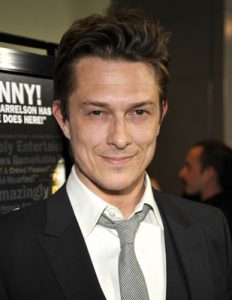
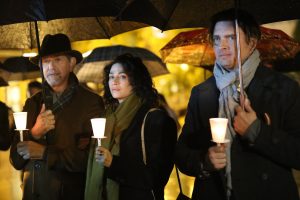
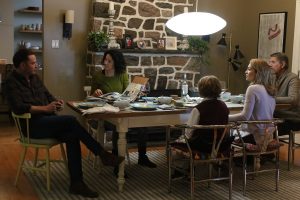
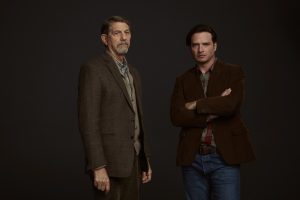
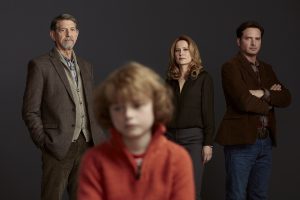
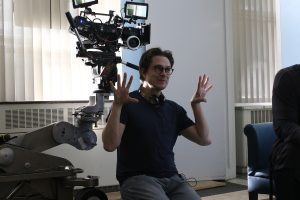
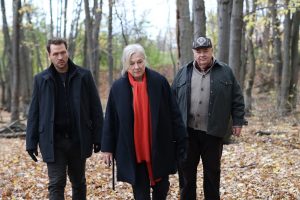

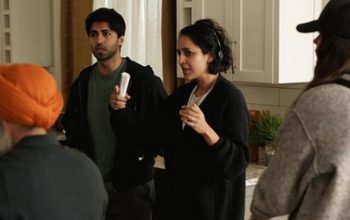
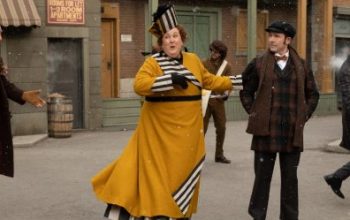
6 thoughts on “Director Peter Stebbings Previews CTV’s The Disappearance”